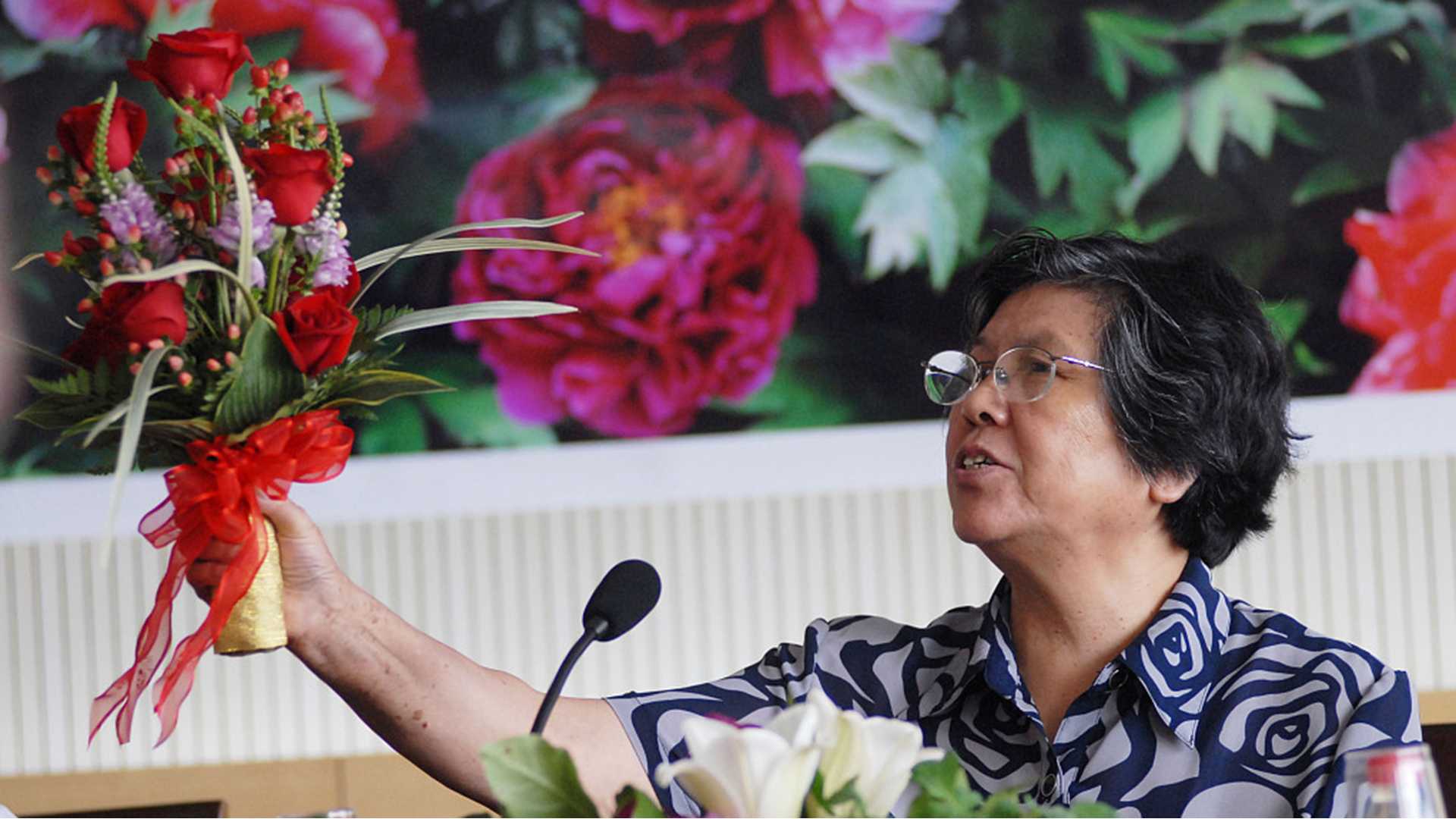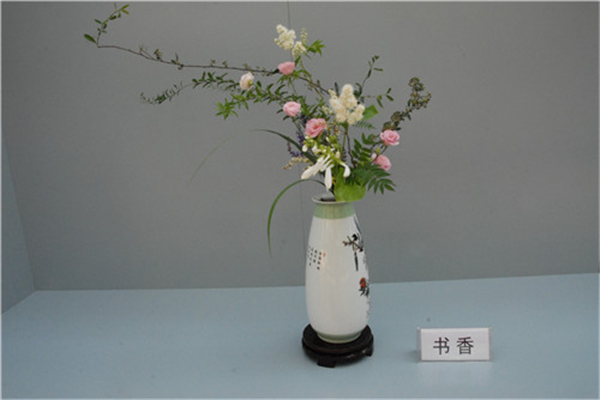
Culture China
14:49, 05-May-2019
Language of flowers: Master tells secrets of Chinese traditional flower arrangement
By Sun Ye
02:45

One of China’s best-known flower arrangement masters, Wang Lianying, has already spent half a century in the art.
She's in her eighties now. And she busies herself with passing everything she knows about the Chinese art to her disciples.
This begins with the basics of the language of the flowers. Bamboos are for gentlemen's integrity. Orchids show virtue. Pine needles symbolize tenacity. All down to the very essence of the art of traditional Chinese flower arrangement.
Wang said the art really stands out: "You can tell a traditional Chinese arrangement from others easily."

A signature piece of flower arrangement master Wang Lianying. /Photo courtesy of Beijing Forestry University
A signature piece of flower arrangement master Wang Lianying. /Photo courtesy of Beijing Forestry University
"We choreograph, of course, but they all turn out looking natural. When manicuring, we go with its flow. No human intervention detected. That's the Chinese concept: man and nature are of one." The craft reportedly has some 2,000 years behind it. Wang said it has a lot in common with poetry.
"It's not just a pastime. Like all other arts, the floral arrangement is expressive. We let flowers tell our feelings, resolutions, hopes and dreams."
Her brand of floral talk developed over time: Simplicity and elegance.
Wang had first came to the craft as a college student at the Beijing Forestry University and already well-versed in the language and sciences of the flowers. And now in her eighties, she doesn't want to stop.

Another signature piece of flower arrangement master Wang Lianying. /Photo courtesy of Beijing Forestry University
Another signature piece of flower arrangement master Wang Lianying. /Photo courtesy of Beijing Forestry University
"I thought about retirement, I did. But I want to tell more people about our craft. I want to write more books about it."
Wang has glaucoma. She has kept herself from TV and cellphone screens and whatever other work that strains her eyesight. "I'm really trying to save whatever sight I still have for the art," she told CGTN.
Traditional Chinese floral arrangement is now recognized and treasured at the national level. A small group of veterans have gathered around Wang.
Liang Qinzhang, another artist in the field, said the over 30 years he worked with Wang told him one thing important about the art: "l find there is no end in our practices. You have to learn consistently, from literature to music, to improve your understanding."
Wang and her team’s voices and musings, expressed through flowers, will be put on display over the ongoing International Horticultural Expo in Beijing.

SITEMAP
Copyright © 2018 CGTN. Beijing ICP prepared NO.16065310-3
Copyright © 2018 CGTN. Beijing ICP prepared NO.16065310-3